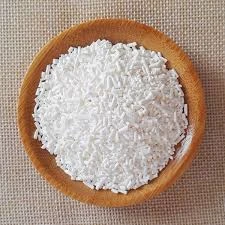
Exploring E901 Food Additive and Its Applications in Food Industry
Understanding E901 The Food Additive
In today's fast-paced world, food preservation and enhancement have become essential aspects of modern food processing. Among various food additives, E901, commonly known as beeswax, plays a significant role in both food production and packaging. This article delves into the nature of E901, its applications, and its safety profile, providing a comprehensive overview of this fascinating food additive.
What is E901?
E901 refers to natural beeswax, which is a substance secreted by honeybees to construct their honeycombs. Composed primarily of esters of fatty acids and long-chain alcohols, beeswax is a complex mixture of more than 300 components, which include various hydrocarbons and fatty acids. Its appealing properties, such as a pleasant aroma and yellowish hue, have made it a preferred choice in many industries, particularly in food and cosmetics.
Applications of E901
E901 is primarily utilized in food products either as a glazing agent or a coating. Its primary role is to enhance the appearance of food items by providing a glossy finish. For example, fruits and vegetables are often coated with beeswax to prevent moisture loss and to smoothen their surface, thereby extending their shelf life and maintaining their freshness. This practice can be particularly beneficial for perishable items such as apples and cucumbers, improving their marketability and reducing waste.
In addition to fresh produce, E901 is also found in various confectionery items. It is commonly used in chocolate coatings and confections to provide a shiny appearance and to enhance the texture. Its film-forming properties allow it to create a barrier that protects food items from external factors, such as humidity and oxygen, further preserving their quality.
e901 food additive

Moreover, E901 has applications beyond the food sector. Its non-toxic nature makes it a popular ingredient in cosmetics and pharmaceuticals, where it acts as a thickening agent and emulsifier, improving the stability and texture of creams and ointments.
Safety and Regulations
When it comes to food additives, safety is a paramount concern. E901 is generally recognized as safe (GRAS) by food safety authorities, including the Food and Drug Administration (FDA) in the United States and the European Food Safety Authority (EFSA) in the European Union. Extensive research and evaluations have confirmed that beeswax does not pose significant health risks when consumed in moderation.
That said, individuals with allergies to bee products should exercise caution when consuming items containing E901. While allergic reactions are rare, sensitivity to beeswax can potentially trigger an allergic response in susceptible individuals. Therefore, food manufacturers are encouraged to clearly label products containing beeswax to inform consumers of its presence.
Conclusion
E901, or beeswax, is a multifunctional food additive that benefits both food preservation and aesthetic appeal. Its natural origin, combined with its versatility in applications from fresh produce to confectionery, reinforces its value in the modern food industry. With a strong safety profile approved by regulatory bodies, E901 remains a vital component in enhancing food quality and longevity.
As consumers become more conscious of what they eat, the importance of transparency and labeling in the food industry cannot be overstated. Understanding additives like E901 empowers consumers to make informed choices and appreciate the science behind food preservation. By recognizing the role of beeswax as E901, we can embrace the intersection of nature and technology that continues to shape our culinary experiences.
-
Pure Sodium Dichloroisocyanurate Dihydrate | Powerful DisinfectantNewsAug.29,2025
-
Industrial Chemicals: Quality & Purity for Every IndustryNewsAug.28,2025
-
Nitrile Rubber Honoring Strict Production StandardsNewsAug.22,2025
-
Aspartame Ingredients Honoring Food Safety ValuesNewsAug.22,2025
-
Fertilizer for Balanced Plant NutritionNewsAug.22,2025
-
Cyanide Gold Processing with High Purity AdditivesNewsAug.22,2025
-
Formic Acid in Textile Dyeing ApplicationsNewsAug.22,2025
Hebei Tenger Chemical Technology Co., Ltd. focuses on the chemical industry and is committed to the export service of chemical raw materials.
-

view more DiethanolisopropanolamineIn the ever-growing field of chemical solutions, diethanolisopropanolamine (DEIPA) stands out as a versatile and important compound. Due to its unique chemical structure and properties, DEIPA is of interest to various industries including construction, personal care, and agriculture. -

view more TriisopropanolamineTriisopropanolamine (TIPA) alkanol amine substance, is a kind of alcohol amine compound with amino and alcohol hydroxyl, and because of its molecules contains both amino and hydroxyl. -

view more Tetramethyl Thiuram DisulfideTetramethyl thiuram disulfide, also known as TMTD, is a white to light-yellow powder with a distinct sulfur-like odor. It is soluble in organic solvents such as benzene, acetone, and ethyl acetate, making it highly versatile for use in different formulations. TMTD is known for its excellent vulcanization acceleration properties, which makes it a key ingredient in the production of rubber products. Additionally, it acts as an effective fungicide and bactericide, making it valuable in agricultural applications. Its high purity and stability ensure consistent performance, making it a preferred choice for manufacturers across various industries.





